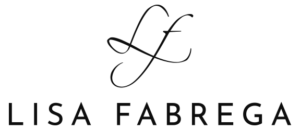lisa fabrega
Want to know what one of the biggest fears you’ll encounter when you’re setting new boundaries? It’s a tricky one!
A few months ago I was speaking about boundaries with one of our Capacity Shift™ clients on a group call. She was setting new boundaries she wasn’t used to having, but which she needed for her own emotional and physical health after burning out big time in her business.
Burnout is a real problem that can show up as mystery physical symptoms, emotional exhaustion, physical exhaustion, unexplained resentment, “inexplicable” revenue declines, or myriad other ways.
But most of the ways people try to solve their burnout are often the wrong approach. Like:
- Shutting down a whole business because you think that’s the source of your burnout
- Endless rebrands and business model rewrites
- Increasing self-care practices or adding new ones
- Getting acupuncture or exploring another healing modality
- Cutting meetings on your calendar drastically
- Hiring too many team members hoping they’ll take things off your plate.
I’m not panning any of these tactics. At times, they can be the right solution. But of the thousands of people I’ve helped with burnout, most of them had tried all of them. Sometimes there was a temporary improvement. But a month or a year later, they found themselves back in that burnout place again.
What happens then? When self-care doesn’t really work for you anymore? Or you still can’t stop feeling guilty about missing things at work or home when taking the necessary time for you?
It means the business model, calendar, self-care, branding, or team members aren’t the real source of your burnout. It’s almost always your capacity, aka you.
One of the three capacity tools for healing burnout is setting better boundaries that align with who we’re growing into vs. the old boundaries that served our prior selves. Very often, you’re operating within the boundaries of your previous quart-sized self when you need to upgrade to the boundaries of the gallon-sized self you’ve grown into.
And if you want to keep growing, your boundaries need to match the capacity of the future self you’re trying to become.
If you hold back on setting upgraded boundaries, you do that for the same reason my client asked that excellent question: “What if I set a boundary and I’m “wrong” because it was “too rigid?”
So, I shared a personal story with her and the group: “For years, people have called me “the “queen of good boundaries,” but I’ve actually had to master my Boundary Capacity™ because, by nature, I’m NOT good at boundaries.
I was raised in an environment where it wasn’t safe to have boundaries; doing that often meant I’d receive abuse. So my instinct to “survive” was to overgive and allow myself to be steamrolled. I’m also so good at “figuring it out” (another survival instinct) my first impulse is to over-accommodate when others can’t…
It often showed up in little ways, like always being the one to flex her calendar when that “super busy friend” wouldn’t. Or putting more energy into a relationship when the other person didn’t return it equally. Or attracting clients who expected me to do the work for them and didn’t want to show up for themselves.”
I had to expand my Boundary Capacity to make space for myself. Re-train the impulse to overrun myself. I had to learn and adjust the boundaries I needed every time I grew. And it was devotional work because if you were never good at boundaries, it can feel like you’re feeling around in the dark when you’re setting new ones.
When I first started setting boundaries, I could be too rigid. That’s OK! Give yourself permission to explore the rigid side of your boundaries for a bit and not “get it right” initially. Don’t expect perfection when you’re learning a new skill. You wouldn’t yell at a child for not knowing how to walk, would you?
That’s the only way to learn what boundaries work and don’t work for you. And you’ll eventually swing the pendulum back to somewhere in the middle.”
One of the things I love about Capacity Work is it allows you to start figuring out which boundaries you need NOW to actually heal burnout and build something better for the future (so you don’t repeat the burnout cycle as you grow.)
The best part? Now that I’ve been working on my Boundary Capacity for many years, I’m really starting to have fun. I don’t worry about upsetting people with a boundary, and I don’t worry about people who may try to cross them. If someone gets upset at a boundary, they don’t care about your well-being.
Capacity work helped me know I can trust myself to set the right boundary at the right moment. I’m okay if I get it wrong. We can always adjust and tweak along the way. This means I’ve gotten to the point where my boundaries can flex to the situation and be responsive instead of reactive.
There’s a difference. You learn how to differentiate the two when you do Capacity Work.
You’’ll always need to expand your capacity as a growth-oriented person. That client who asked that great question? She felt “relieved” after the coaching call, and proceeded to trust herself setting her new boundaries. No more fear. She’s going to learn so much about herself and is going to set her business and life up for a burnout-proof experience because of it.
When was the last time you did a boundary review to see if they still apply? Are you sure of the boundaries you need at your next level? Or do you feel like you “don’t know cause you’re not there yet?”
Want to find out which area of your life is holding you back?

